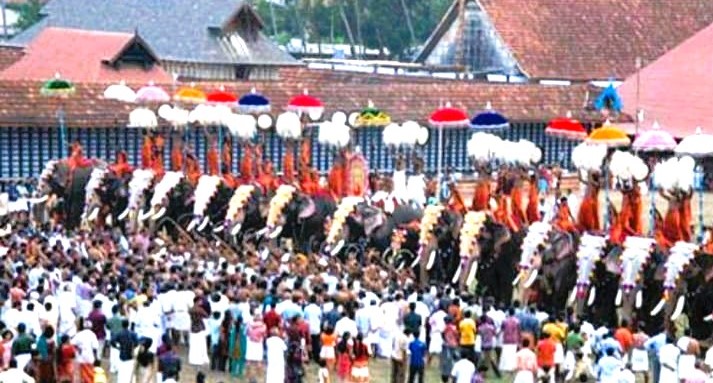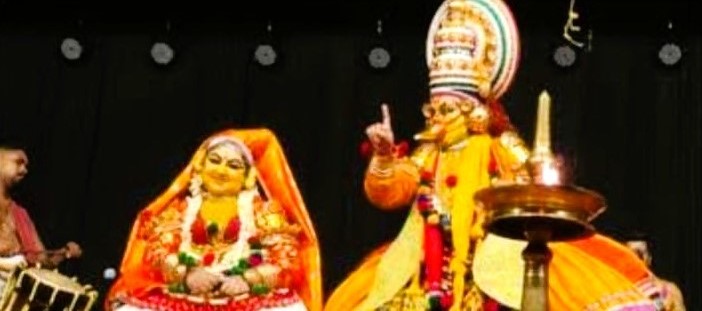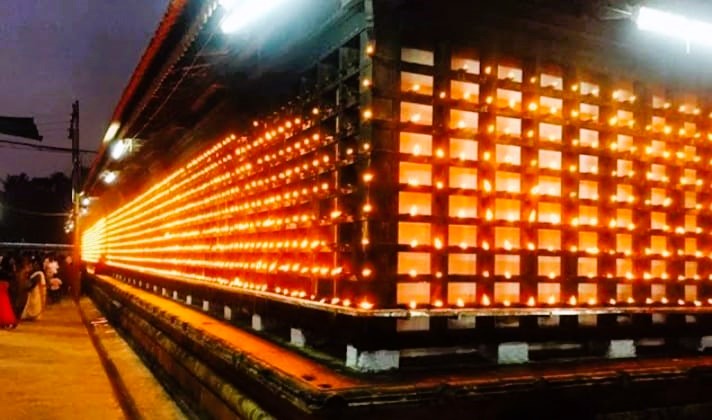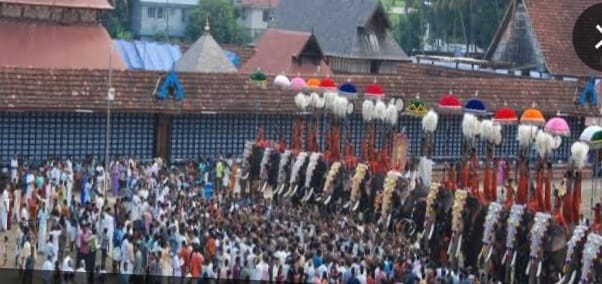The much-awaited Part 2 of ‘Ende Keralam’.
Every vacation at Grandma’s had in store for us some special event or occasion to spice up our stay—a family wedding, the local temple utsavam, the harvest season or celebration of some traditional festival—and they continue to evoke very pleasant emotions and memories for us.
THE RICE HARVEST TRADITION
Vacations in Kerala also meant being a part of the paddy harvest season, an earthy and exciting experience for us.
In those days, the landed class had the luxury of employing multitudes of workers for domestic and farm work. Generations of these families had exclusive allegiance to each tharavad (the traditional ancestral houses of Kerala). With communism, literacy and fragmentation of property, they were freed from this duty in the mid-20th century.
The koythu kaalam (rice harvesting season) gave us a chance to watch every process—the threshing, winnowing, boiling of the paddy, and so on. The entire front yard of the kovilakam (grandmother’s home), including the kayyala or shed and the ara or a huge wooden granary, became a hub of activity from dawn until late into the night.
Men in lungi and head scarf, the women in the typical lungi and blouse, would shuffle up with loads of paddy sheaves balanced on their heads and arrange them in heaps. Each family had their territory marked out. By evening the stacks would be pretty high. Threshing began the following day. The bundles would be laid flat and the women would begin to stomp on them to separate the paddy from the grass. Sometimes, we children would try our hand at it while the workers were on a break. It made for a beguiling sight.
By the third day, the paddy was ready to be measured. Under the caretaker’s supervision, each family would measure their catch in the para or wooden bushel in a singsong voice— onne (one)… rende (two)… We would gleefully join the chorus. I think each family’s share of paddy was proportionate to how much they had harvested. The older cousins had their share of fun watching romance blooming among the young farm hands.
The huge cauldrons or urulis of bell metal would come out of the storeroom for boiling the paddy. Then came the drying, and finally, the hand-pounding, before the rice was readied for our use. The smell of boiled paddy as they dried on rows and rows of bamboo mats pervaded the house. We would grab fistfuls of the paddy to munch on as we excitedly watched the bustle. Each step was a ritual in itself and the week or so of this hectic activity was an exciting experience for us.
THE UTSAVAM OR ANNUAL TEMPLE FESTIVAL
April and May heralded the fascinating temple festival at the grand old Koodalmanickam temple—perhaps the only temple dedicated to Bharatha, Lord Srirama’s brother—and the pride of the town. It was a 10-day extravaganza showcasing the very soul of everything that was and is Kerala. We were taken to the temple everyday to watch a different ritual.
There was the daily Shiveli where the deity was taken in a procession of 17 decorated and bejeweled elephants. The tallest and most regal elephant was privileged to carry the deity and was flanked by two baby elephants. It was a magical spectacle to watch the majestic elephants, with the gold or silver nettipattam adorning the head, while the priests on the elephant back would wave the aalavattam (a circular fan made of peacock feathers) and the venjamaram (made of yak hair) in rhythmic movements. The procession was accompanied by the panchari melam, an intoxicating percussion ensemble of drums and clanging cymbals and bugles. It was a heady experience to jostle among the frenzied crowds which drowned themselves in the music, outstretched hands waving to the rhythm of the band. Every evening, the spectacle of the chuttuvillakku (when the entire temple was lit up with oil lamps) was an enchanting sight to behold.
In addition, there was the cultural bonanza each day—the ottamthullal (a recite and dance art form, also referred to as poor man’s kathakali), music concerts, classical dance programmes, ballets, puppet shows and so on. The late night kathakali shows (the spectacularly visual traditional dance of Kerala), were a unique experience. The Srirama Pattabhishkham or coronation of Lord Rama, was our favourite. Grandmother would elaborate every scene as it unfolded on stage late into the night. The sleepy heads were allowed to sleep through the show on newspapers laid out on the grass.
Another experience we cherished was shopping at the temple fair grounds. Our little wallets were usually full of money gifted by uncles and aunts for the Vishu festival which ushered in the New Year. We would excitedly buy up multi-colored bindis, bead chains, glass bangles, ribbons, clips, and finger rings. We were enchanted by the small, fancy toys of plastic or metal displayed in the stalls—leaping frogs, egg-laying hens, fighting cockerels, jumping snakes—all cheap and fitting our meagre purses. These were some of the many small pleasures that spelt magic for us.
Those were the days when we had to wait for these special fairs or exhibition to see or buy the trivia that meant so much to us. Today, everything is easily available anytime and anywhere, and it is unfortunate that we do not experience the same magic and wonder in these little indulgences.
Looking back, it seems that we are perhaps the only generation that enjoyed the best of two worlds—having grown up rooted in traditions and rituals, savouring simple pleasures of life with family and friends, feeling wonder, awe and magic in little things—and today, have moved on to adapt and adopt a lifestyle driven by the luxury and reach of technology with the same sense of wonder and appreciation.






Comments (9)
Good janu to go through the old memories of our childhood days so preciously cherished in our minds
🎆 Thank You for sharing Janu Chechi ♥️👍🌟 Superb Effort👌 A Treasure Trove of Memories Indeed 🤩
Beautiful memories and absolutely love this post sis.
Loving all the ‘Ende Keralam’ posts and hope to visit the Tharavad with Jaanu next time I’m in India.
This was a wonderful read and someday, I hope to visit Kerala with my family. Thank you for sharing your childhood memories.
Thanks Sukanya for sharing the link 😍
Beautifully written Janchi…Each word brings to life our childhood memories …a journey into my past <3
A very visual and vivid detailing of your childhood memories, Janaki👌👌, I was feeling as if transported to those times and everything is happening around me😃! Enjoyed reading the good old days of yours and I am not sure whether today’s lifestyle will ever compensate or substitute what we experienced as children 😇.. I just feel sad that current generation might have missed these little but memorable fun 🙂.. keep sharing and hope this will help them at least realise what were those wonderful times ☺️
Janaki..as usual , what a wonderful and refreshing read. You captured the pulse, the earthy smell, the stomp of the paddy harvesters & the myriad hues of temple festivals so vividly. Our generation was lucky to see these rituals. It evoked memories of my childhood holidays in our tharavad..of similar harvest, jumping into the pools & thodu for bathing & the constant supply of savouries.
Waiting for Part 3..keep going on & publish a book.